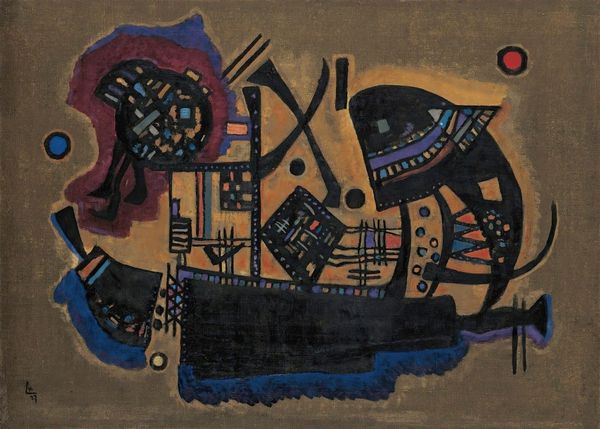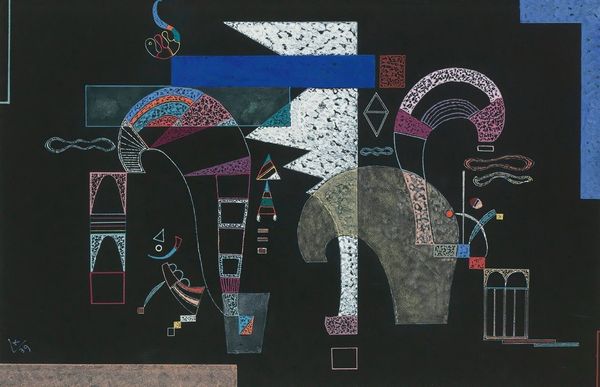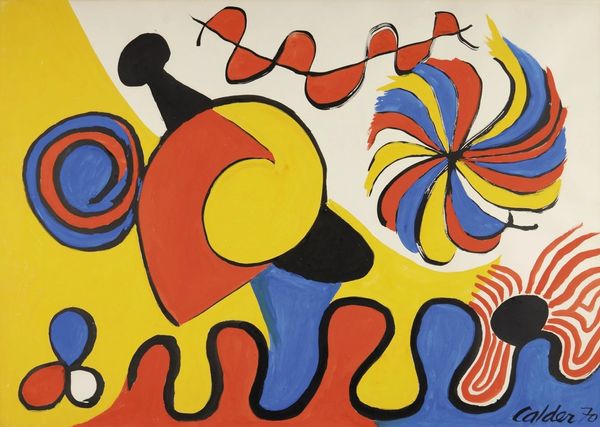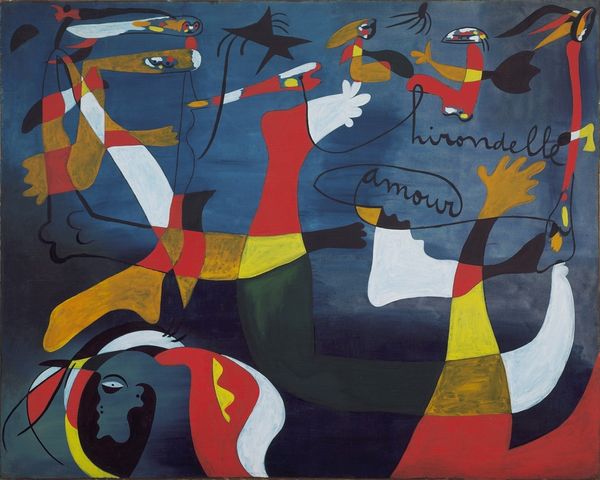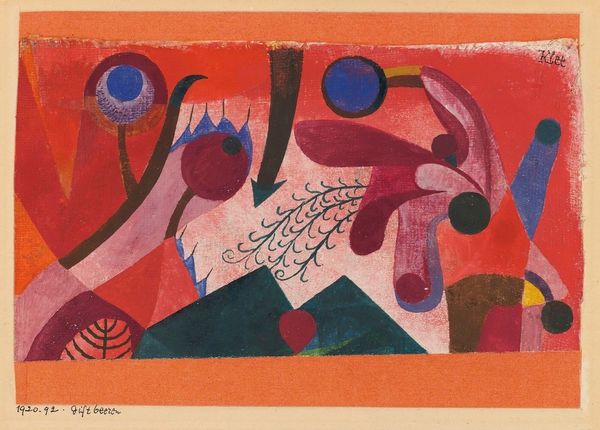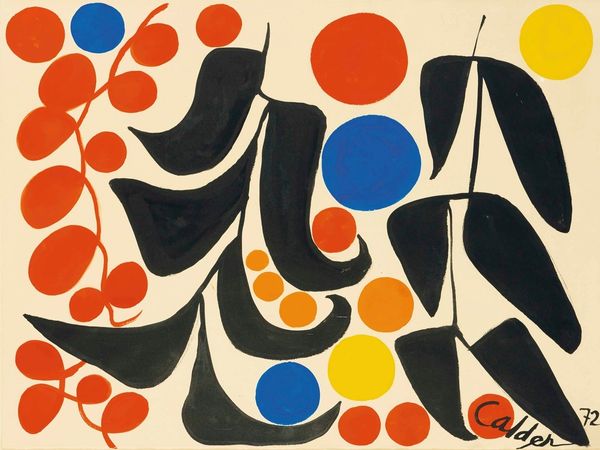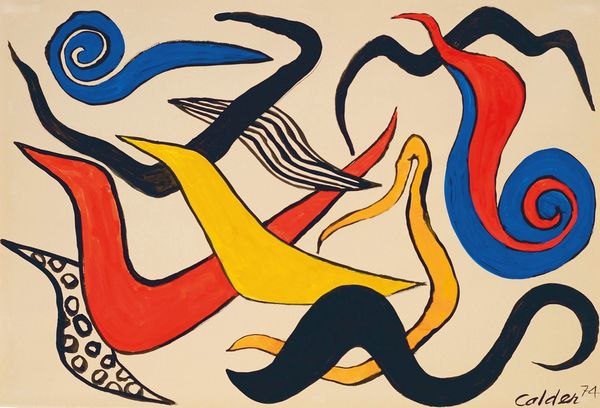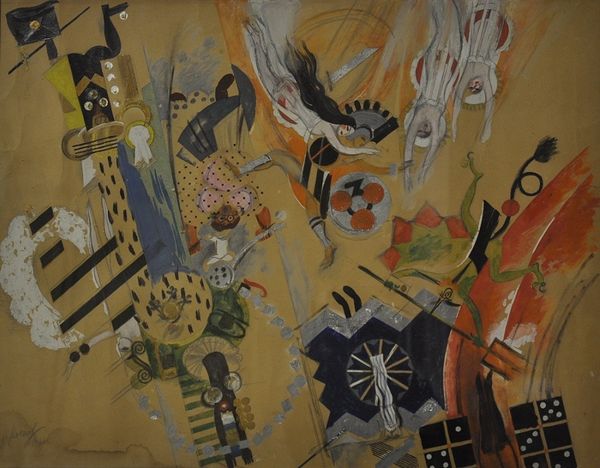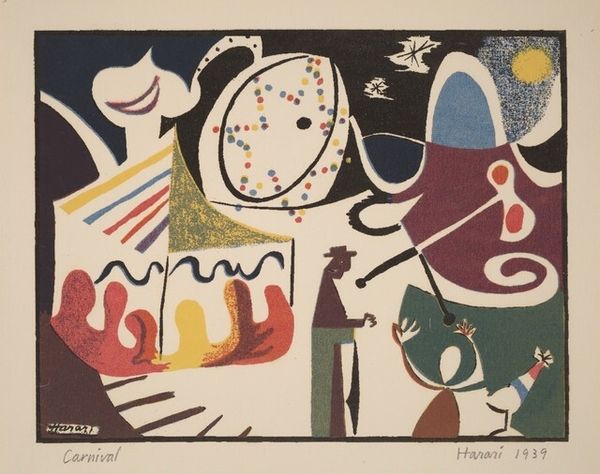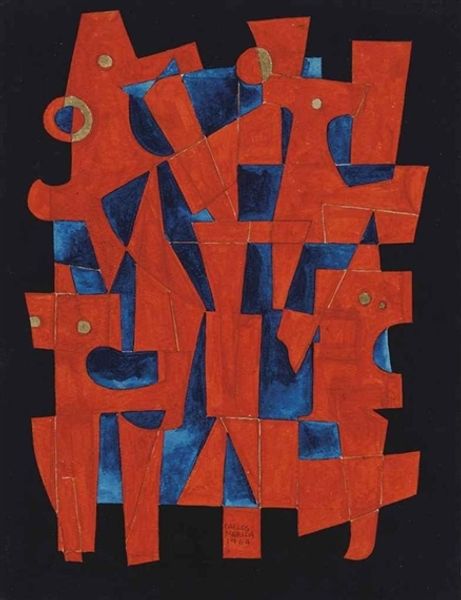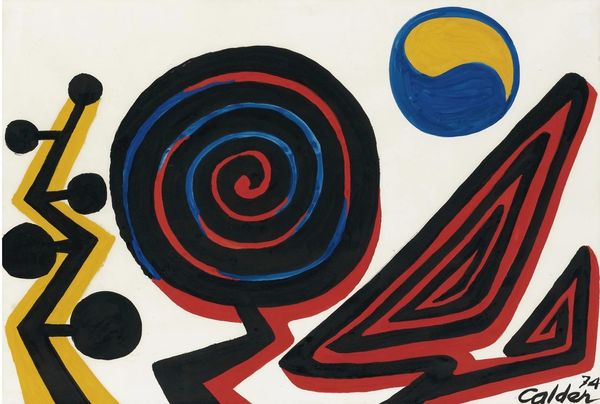
Copyright: Public Domain: Artvee
Editor: This is Kandinsky’s “The Arrow” from 1943, an oil painting with such striking shapes against that deep blue ground. It feels almost like a map or a constellation... or even characters in a strange play! What do you make of it, considering the composition? Curator: Immediately, I am drawn to the interplay of geometric forms—the contrasting angularity of the left-hand figure versus the curvilinear forms that dominate the composition's center. The painting displays a fascinating tension between the hard edges of the shapes, and the soft texture implied by the brushwork and varied coloration within these forms. Consider the title, "The Arrow," and the symbolic direction it imposes, directing our reading of forms throughout the piece. What relationships do you see being established and/or undermined through use of formal composition, line, and colour? Editor: I see that the "arrow" shape pulls the eye, as you say, but I keep getting caught up in that vibrant red shape at the upper right—it is difficult not to interpret it as the focal point, regardless of any arrow. And how do you see the shapes interacting formally, if not as directional cues? Curator: Note how the cool tonality of the painting's foundation, in stark contrast to that red "shape" – an element which itself contradicts any clear geometry – causes one's eyes to see their interplay. It both suggests forms – animal, cloud, figure – yet the piece stops short of definite representation. How do we reckon then with semiotics and abstraction? Where is Kandinsky drawing lines or building thresholds between his forms and expressionistic communication? Editor: It seems the painting is about this dance between signs and pure form; that the meanings come alive within that tension between what the forms are, versus what they represent. Thanks, that really helped me focus on how the art's form shapes it! Curator: Precisely. Considering such interplay and dissonance may prove key to unpacking similar modern art movements and theoretical constructs.
Comments
No comments
Be the first to comment and join the conversation on the ultimate creative platform.

